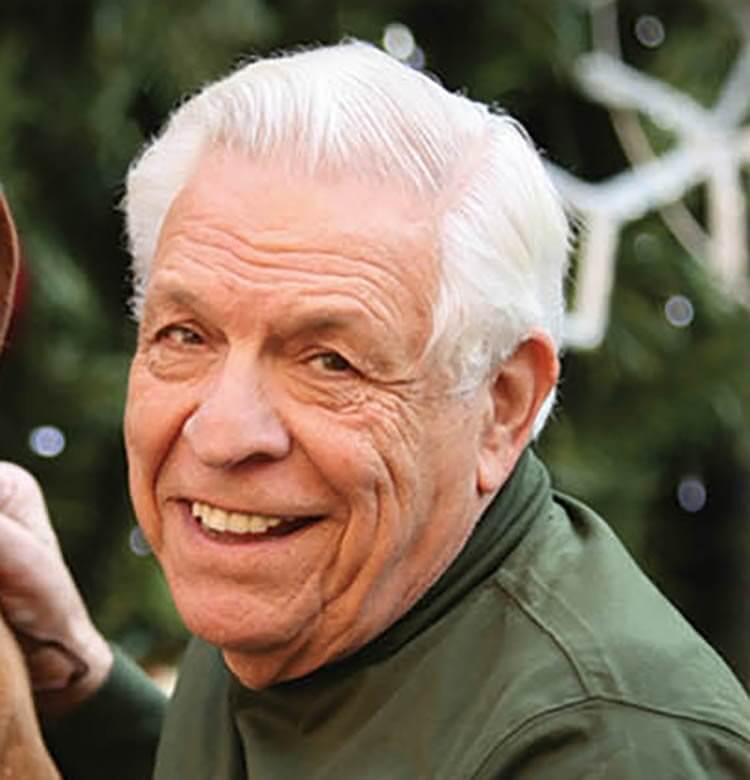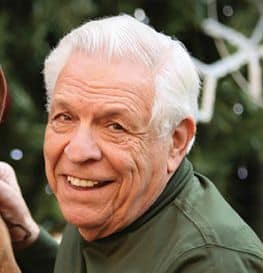Interview with Hound Group Judge D. Jay Hyman
I grew up loving dogs. At age two, I was told not to go up to strange dogs in the street. “That dog doesn’t know you,” warned my parents. Thereafter, I would let the dog sniff my hand while I said, “Hi, dog. Me Jay Hyman.” It was all the introduction I needed. At age eleven, I acquired a purebred Wire Fox Terrier bitch, “Zazu Pitts of Mahwire” (the famous kennel) which I showed at the Old Dominion Kennel Club show. In those days, the show was held at Katherine Filene Shame’s estate in McLean, Virginia—the site is now Wolf Trap Farm National Park. My mother gave me a copy of The Complete Dog Book for my 11th birthday, and the three-volume Hutchinson’s Dog Encyclopedia was my favorite Bar Mitzvah gift. During my years at the University of Pennsylvania Wharton School and Harvard Law School, I had to content myself with dogs in books and artwork. In 1959, though, I was introduced to James Fielding Lewis and his Rhodesian Ridgebacks, and brought home the bitch that would become Ch. Lewisfield’s Rolling Reveille.
In short order, I met Bill O’Brien, Margaret Lowthian, and her partner, Gene Freland. I visited the latter’s Lamarde Perro kennel in California where I greatly admired all the Rhodesian Ridgebacks, particularly Ch. Rockridge’s Temba and Ch. Lamarde Perro Rose of Mission. I later acquired a couple of bitches from Margaret—one a Temba/Rose daughter—and both primarily from Viking and
Gazeley lines. I bred Ch. Lamarde Perro Yakala A to Ch. Kraal’s Pungo, himself linebred on Gazeley. That breeding produced, among others, Ch. Rolling’s Toowoomba HIM, a top dog and sire of his time.
For more than a half-century, my Rhodesian Ridgebacks have maintained “a look,” particularly their heads, that instantly identify them all over the world as a Rollings dog. I have exported dogs to England, France, Sweden, Portugal, Mexico, Brazil, India, and elsewhere; Toowoomba’s descendants are found nearly everywhere there are Rhodesian Ridgebacks. I have provided foundation stock to dozens of American breeders (including some senior breeders), and it is a rare Rhodesian Ridgeback pedigree in the US that doesn’t include a Rolling’s dog or two. I can often be found sitting cross-legged on the ground with a lap full of Rhodesian Ridgeback puppies. I present AKC-approved seminars on the breed, and I am an AKC Judge approved for BIS, the Hound and Herding Groups, and some Terriers. Now semi-retired, I maintain an active law practice devoted exclusively to purebred dogs and the fancy. I have served on the Board of Directors and in most offices of the Rhodesian Ridgeback Club of the United States, and was the club’s Delegate to the AKC. I have been a member of RRCUS since 1959.
Where do I live? How many years in dogs? How many years as a judge?
D. Jay Hyman: I’ve lived in Mt. Airy, Maryland, for the last 20 years. Prior to that I lived in Barnesville, Maryland, and the kennel was started in Chevy Chase, Maryland, on Rolling Road. (Hence the name.) I started breeding Rhodesian Ridgebacks in 1959 as Rolling Kennels. As a child, I raised Wire Fox Terriers from age five, with my first dog show in 1941. I was approved in 1987 to judge Ridgebacks and Whippets, which I had been breeding since 1964 when I purchased a dog that my son could show in Junior Handling. I was concerned with him showing a Ridgeback because he was not old enough to control a Ridgeback if it was attacked.
What is my original breed? What is/was my kennel name?
D. Jay Hyman: As noted, my original breed was the Ridgeback, but subsequently, I raised Whippets (20 years), Greyhounds (15 years), English Bull Terriers (10 years), and Australian Cattle Dogs (15 years), always having Ridgebacks—up to the current date. The kennel name has always been Rolling Kennels.
Can I list a few of the notable dogs I’ve bred?
D. Jay Hyman: Over the many years, there were over one hundred champions. Probably the best-known Ridgeback was Ch. Rolling’s Toowoomba, and the best-known Whippet was Ch. Rolling’s Viktor, both of which were outstanding sires that still exist in today’s pedigrees. I only exhibited in Conformation events.
What are some of the qualities I most admire in the Hound breeds?
D. Jay Hyman: I have found the Hounds to be reliable, affectionate, biddable, and not likely to wander or fight other dogs. I admire that they are willing to stay with you but are not as needy as other breeds. Mine have always been able to be off-leash in the country, or someplace where there are no dogs or traffic. There is no question that they are not as trainable (i.e., intelligent) as the Australian Cattle Dog. My ACD, if she saw a suitcase out to get ready to go to a show, would just sit in the suitcase, figuring I could not leave without her.
Have I judged any Hound Breed/Group Specialties?
D. Jay Hyman: I have judged numerous Specialties in various breeds both here and out of the country. Naturally, I have judged numerous Hound and Herding Groups, and BIS.
Hounds are, first and foremost, hunters. How does this inform my decision-making in the show ring?
D. Jay Hyman: Every dog, regardless of breed, has to look like it could perform the function it was bred to do. This and “type” are the first two features to be judged when a dog comes in the ring. If they pass here, the examination goes on.
How important are breed hallmarks in the Sighthounds? In the Scenthounds? In the “Primitive” Hounds?
D. Jay Hyman: In the Ridgeback, the hallmark would be the ridge, yet in the Standard it accounts for only a minimum point count. While my opinion is that there must be a ridge, I do not throw the dog out if the whorls do not line up perfectly. The form of the ridge, and the length, have some flexibility. Head, shoulders, and movement are more important than a finite ridge. This is not to say that when it comes to the final placing of the dog that any of these items may be the determining factor between two dogs.
There is disagreement as to whether the Ridgeback is a Sighthound or a Scenthound, as they perform the functions of both. I, personally, if forced to divide the Group into Sight or Scent, would place them in Sight as I would prefer showing against the Greyhound, etc., than the Bloodhound.
Would I have any advice to impart to newer judges of the Hound Breeds who come from other Groups?
D. Jay Hyman: I would first look at if the Hounds seem to be able to perform the function for which they were bred and if the type is there. After that, you can examine for the items listed in the Standard. Try and remember to look for the items within the Standard and not the perceived defects in the animal. If you concentrate on faults first, you will miss the good points. Only look for the faults as a way to detract from what you consider the good parts of the animal. Side-go is more important than coming and going. If they don’t please you from the side, how they come and go does not matter. Once you have in mind the good points, then you can choose by considering the faults to distinguish between the animals. Don’t be afraid to look at the Standard during examination if there is something bothering you about a specific item (such as the length of a Beagle’s tail or how big a spot is allowed on an animal).
In my opinion, how do today’s exhibits compare with the Hounds of the past?
D. Jay Hyman: Over 50 years I have seen good dogs and bad dogs in every part of the country and in every decade. In some breeds, there is more consistency today than there was in the past. However, in Ridgebacks, one that I saw in the very early years is still my favorite specimen.
When it comes to Group and Best in Show competition, do Hounds have a “leg up” or a liability? (Think Westminster.)
D. Jay Hyman: If history teaches us, the more popular breeds probably have an advantage over the Hounds, especially those of limited numbers and exposure. But then, if there is an exceptional animal, such as today’s Scottish Deerhound, it will overcome the perceived disadvantage. In my early years in Ridgebacks, it was very uncommon to get a Group placement, much less a BIS. As time has gone on, there are more being shown and, for the most part, more consistency among good animals. (Though it is still somewhat uncommon for a Ridgeback to get a BIS.) I think the majority of judges have bred other breeds and are more likely to be more knowledgeable about the other breeds, and thus, favor them. In my personal case, not being used to Toys, a specimen probably has to be more outstanding for me to recognize its quality. Yet, I have given BIS to Toys; particularly the Peke. The same is probably true for the more unusual breeds such as the Pumi, which I have given a Group One. Conversely, since I am so familiar with the Ridgeback, I am more discriminating with them and it is probably harder for me to give them a Group One or a BIS.
If I could share my life with only one Hound Breed, which would it be and why?
D. Jay Hyman: Having grown up with Ridgebacks, it would be a Ridgeback. They are easier than most dogs to live with. The better question would ask if I could only have one “dog,” which would it be? It would be hard to decide between a Ridgeback and a Cattle Dog. However, if it was to be six animals, it would not be Cattle Dogs.
Just for laughs, do I have a funny story that I can share about my experiences judging the Hound Group?
D. Jay Hyman: I think that judging the Hound Group has always been pleasurable and there are always enough good dogs to be challenging, sometimes so many that it is difficult to make the final decision.
The funniest dog show story occurred, I think, in Harrisburg, Pennsylvania, when a woman had to “go” and chose a dog exercise pen to relieve herself. She was reprimanded by the AKC Rep, but the next day some handler hung a roll of toilet paper on a hanger on the fence.










